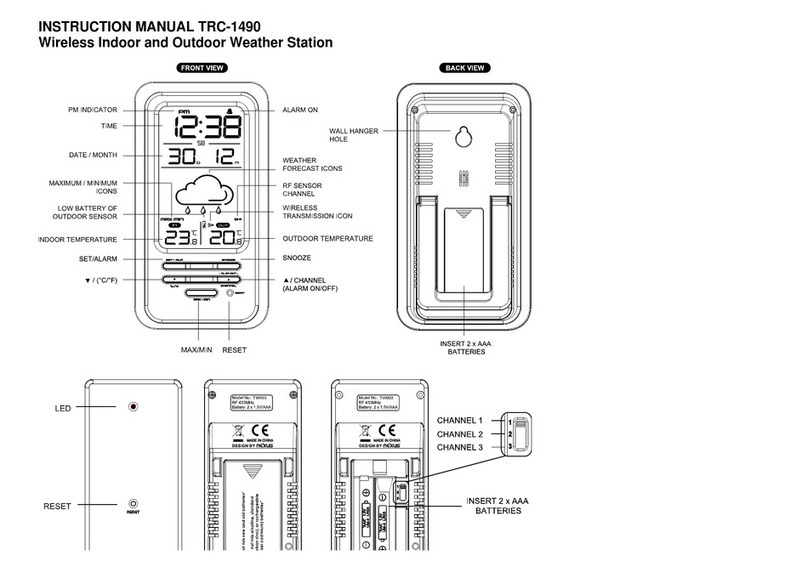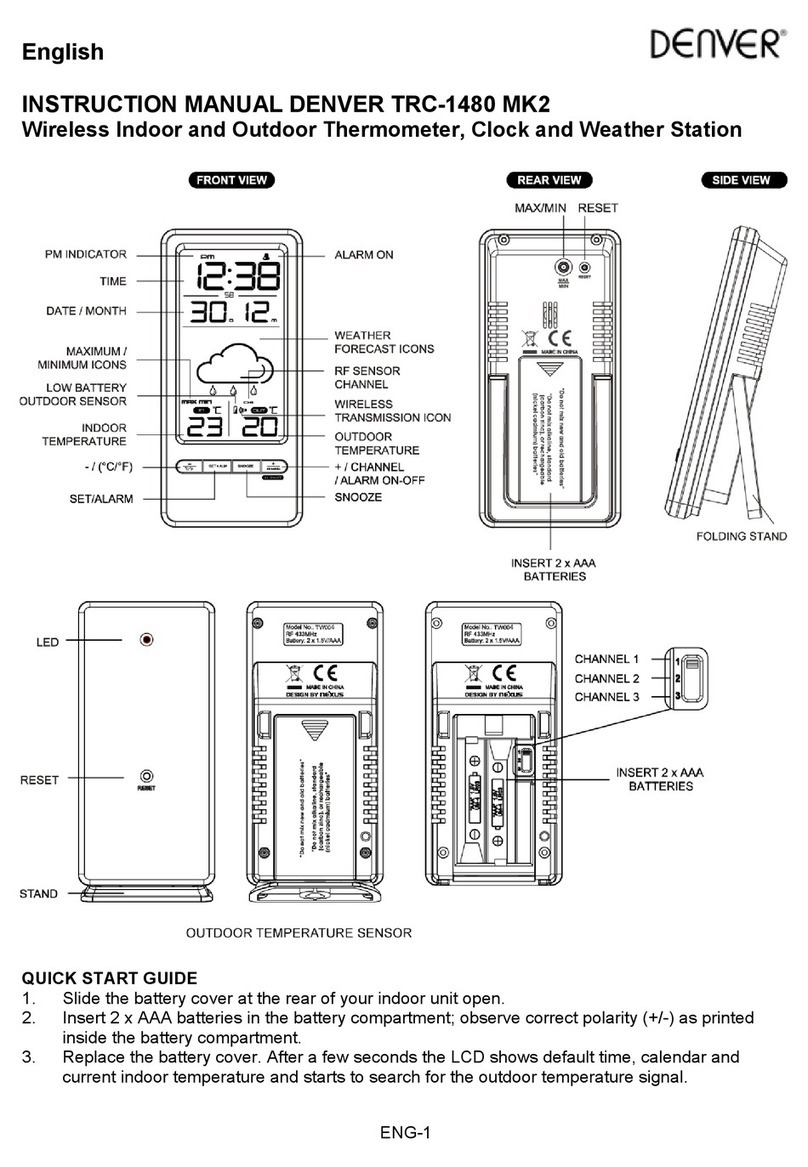
[Skriv her]
Changing channel and connecting additional sensors
1. Press the channel button on the main unit’s display repeatedly to select the desired channel1.2 or 3 for
the sensor. Then press and hold the channel button until the icon starts to flash.
2. Remove the battery cover of the temperature/humidity/wind sensor and set the sensor switch to the
corresponding channel you just selected.Data from the sensor will be loaded within 3 minutes.
If you press the channel button until the cycling symbol shows, data from all three sensors will be shown
automatically, sensor by sensor
3. If the sensor signal is not found, remove the batteries and proceed again,or press the TX button(49) to
reset.
Radio controlled clock (DCF77)
When turned on the first time, the base station automatically starts to search for a DCF signal for the time
setting. If no signal is found, the search stops and you need to set the time manually. It may take some
Time for the station to received the signal. The mian unit will updated the DCF signal every night at 1,2 and 3
o’clock. Note! The main unit only recieve the DCF77 signal on channel 1. Therefore, make sure that there is at
least one sensor on channel 1.
You can also activate a search for the DCF signal manually. Press and hold the wave button located in the
battery compartment of the temperature/humidity/wind sensor to initiate a search. To end the search Long-
press the wave button again.
Time,date and forecast settings
Press the mode button on the display, then hold the set button for 3 seconds to enter the time setting mode.
The current value starts to blink. The values are changed in this order: time zone>language>year>month
/day order>month> dat>12/24 hr>hour>minute> second>exit. Change the values with the up/down buttons
and confirm and move to the next value with the set button.
Alarm settings and features
Press the clock button on the display to select one of the two alarms, on the display indicated with AL 1 or AL
2. Both alarms can be active at the same time. To set the alarms, press the mode button twice and then hold
the set button for 3 seconds until the hour value starts to blink. Change the values with the up/down buttons
and confirm with the set button.
When the alarm goes off, the display lights up will and the alarm sounds for three minutes before it is turned
off. Press the snooze /light button on top of the base unit to snooze the alarm for 5 minutes.
Press any other button to turn off the alarm for the day.
Settings for altitude and atmospheric pressure
The weather station shows atmospheric pressure in hPa or in Hg and keeps a history of pressure readings for
the last 12 hours. To achieve more accurate calculations of pressure values you should manually
Set the altitude for the place where the weather station is being used:
1. Press the mode button on the display 3 times.
2. Press the set button or 3 seconds and use the arrows to set altitude between -90 m to +1990 m (10m
increments).
3. Press the mode button to switch between M/pha and Ft/inHg units.
4. Press the set button to quit settings.





























